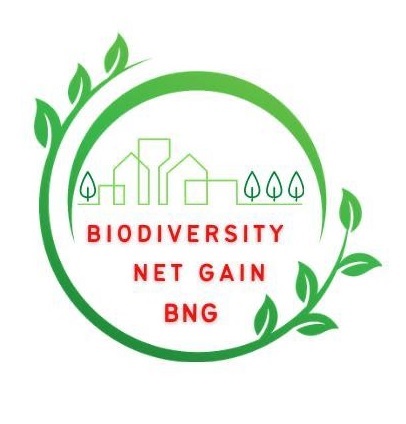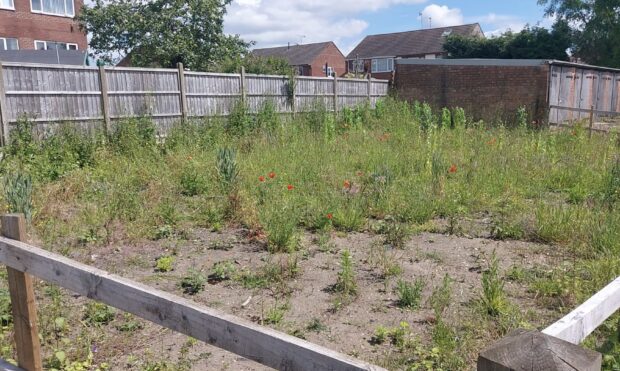
In this Biodiversity Net Gain (BNG) guest blog industry experts sharing examples of BNG on small sites. They are:
- Karl Powell, Director, KADS Design Services Ltd – used the Small Site Metric (SSM) and digital tools to redesign a mixed site. It enhanced the design, facilitating timely submission to the Local Planning Authority.
- Oliver Lewis, CBE, Founder Joe’s Blooms - used the SSM and digital tools to produce a plan for turning a species-poor field margin into a species-rich area with quality grass and small trees. It showed how the project could meet environmental and aesthetic goals within the site's limited boundary.
- Ella Dangerfield ACIEEM, Professional Ecologist, Burton Reid Associates - used the SSM and considers how it compares with the Statutory Biodiversity Metric.
Our guests discuss how they use the Small Sites Metric (SSM) calculation tool. It applies only to ‘small sites’ as defined in The Small Sites (Statutory Biodiversity Metric) User Guide. In short, this means residential development with 1 to 9 dwellings on a site area less than 1 hectare. If the number of dwellings is unknown, the site area must be less than 0.5 hectares. Non-residential development is where the floor space created is less than 1,000 square metres or the total site area is less than 1 hectare. Refer to the SSM User Guide for further information.
In their own words, here are Karl, Oliver and Ella’s reflections on their experience with BNG on small sites below.

- Garages on a mixed site including sealed surface
by Karl Powell - KADS Design Ltd
A client asked KADS (Design) Ltd to design and develop a set of new garages in Bulkington, Warwickshire for prompt submission to the Local Planning Authority (LPA). The garages would be built in an area with both sealed surface and habitats with plants. The site did not qualify for a BNG exemption.
The site was under 10,000 m² and the total commercial floorspace of the new build was under 1,000 m2. This meant that KADS (Design) Ltd could produce a Small Site Metric (SSM). The team was able to easily map out the current habitats on the site using available digital tools. The intended works were then added.
The team saw the impact of the original plans on the biodiversity score. We agreed that there was no need to pave over the land around the edges of the garages as originally intended. Instead, we decided to convert the paving into grassland with a few small trees. Following this, the team adapted the designs to add a set of trees and two areas of high-quality grassland habitat.
KADS (Design) Ltd offered a new design for the site within hours. It clearly delivered an on-site gain of over 10% and fully complied with the principles of the mitigation hierarchy. The team used the Small Site Metric and available online digital tools to achieve this. This enabled them to fully meet the BNG requirements. They also delivered an improved design and submitted all necessary documentation to the LPA in a matter of hours. This prevented the client from experiencing any delays or onerous costs. The Small Site Metric saved time and money. It also allowed the client and developer to work together to find a solution that suited everyone.
- Agricultural building and gravel drive on a field
by Oliver Lewis - of Joe’s Blooms
The project was to secure planning permission for a new agricultural building and to extend a gravel pathway on a field. The application was subject to mandatory BNG because it was submitted after 2 April 2024, and it affected more than 25m² of the field.
The proposed development involved building over a portion of grassland. The red line boundary only covered a small part of the field. Most of that was existing paving. This meant it wouldn’t be possible to secure the necessary uplift by enhancing the field. Instead, the team would identify and use an appropriate set of specific uplifts.
The total area of the site was under 10,000 m² and the new building had a footprint of less than 1,000 m². So, the team could use the Small Site Metric (SSM). Unlike the main metric, the SSM does not require an ecologist to undertake habitat condition assessments, although it must be completed by a competent person with the knowledge and skills to complete and review SSM calculations. This meant that after a site walkover by a competent person, the team could use the SSM and other digital tools like ours instead.
The team used these tools to map out all the habitats within the red line boundary. They adapted the site design to add small trees to the perimeter of the field. These included saplings with diameter at breast height of under 30cm. It was also deemed possible to improve the grass mix within the margins by planting a more diverse mix of species, which would further boost the BNG score.
By iterating the design, the project found a way to secure the needed on-site uplift by planning to transform what was originally a species-poor field margin into a species-rich area. It is defined by high-quality grassland and small trees. BNG requirements were both good for habitat, and the aesthetics of the new development and the wider site.
The team was able to find an on-site solution within the constraints of a limited red line boundary. By using the SSM and digital tools available to them, they were able to generate the SSM Excel sheet, habitat plans, and submit them to the Local Planning Authority. The Small Site Metric allows developers a simple, proportionate and effective way to measure biodiversity, and (even better) the metric is available online for free.
- Farmyard site with static caravan, soakaway and water treatment plant
by Ella Dangerfield - of Burton Reid Associates
We used the Statutory Small Sites Metric (SSM) to inform proposals on a rural farmyard site near Buckfastleigh, Devon. The plans included a static caravan, a soakaway and a water treatment plant. The site consisted largely of ‘bare ground’ with some areas of ‘other neutral grassland’ and a small patch of ‘modified grassland’.
When measuring the habitat impacts, we looked at the static caravan’s position on habitat classified as ‘bare ground’. This means any type of bare soil or unvegetated substrate, rather than just hardstanding. So, net gains can still be triggered. We also found the groundworks for the installation of the soakaway will cause loss of ‘modified grassland habitats’. However, the loss of this habitat was recorded as a temporary loss because the habitat would reach its pre-development state again within 2 years. The ‘other neutral grassland’ would be retained, and a 10% gain would be achieved with the planting of a tree adjacent to the caravan.
Our experience using the SSM is that it is limited in its use. Small sites are by their very nature limited in size and therefore contain few areas to deliver BNG. Many sites that we use the SSM for contain a large proportion of garden space. Although private gardens cannot be legally secured, gardens can make a positive contribution to biodiversity. The SSM recognises this in its scoring of the value of gardens. However, it is not possible to use the SSM on all sites defined as ‘small sites’. For example, if European protected species are present or when a designated site such as a Site of Special Scientific Interest (SSSI) or a Special Area of Conservation is within 500m, it may be more appropriate to use the full metric.
The SSM has proved to be a simplified tool for calculating the habitat needed to fulfil the mandatory net gain requirement. It does so in a way that is proportional to the scale of the impacts on small sites.
5 comments
Comment by Diane Evans posted on
We need some residential development with gardens to demonstrate how onsite BNG can be achieved. It looks to me that it's nigh on impossible to achieve onsite BNG for a handful of dwellings with private gardens, though I'm happy to be proved wrong.
Comment by Diane Evans posted on
We need some examples of small site residential development comprised of dwellings with private gardens to demonstrate how onsite BNG can be achieved.
Comment by Nick Sibbett posted on
It would have been helpful if experts had been picked who didn't have such a good experience of small site BNG. The selection of experts seems biased only to those who had good experiences.
Comment by Anne H posted on
Would be interested to hear how the commitment to maintaining the biodiversity uplift will be achieved. For instance, the introduction uses the term ‘quality grassland’ - does this mean species rich, in which case appropriate management is required.
Comment by Mr Austen Jones posted on
This request applies to my small site development in Catford, London SE6. This is a stalled planning re-application for a proposed build of 2 semi detached houses. Stalled from end of July 2024 due to awaiting the finalising of a Biodiversity Net Gain Plan by my appointed ecologist after the shockwave faced during the re-submission process on the LPA Planning Portal that a BNG Plan was a pre-planning application obligation, which was not present in the original planning application in 2023.
The 10% BNG Plan obligation appears to have taken me [as a Small site owner/developer] and many others by total surprise and finding a qualified ecologist took many enquiries before securing one and then waiting for both a site visit and then the long process of preparing both an Ecological Impact Assessment and then the BNG Plan discussions.
What an utter shock to me that the outside spaces are defined both front and rear as 'private gardens' in most instances. As such, these valuable areas appear to have absolutely no value in order to build up any BNG score rating, due to the 30 year monitoring duration required by any proposed BNG Plan. That needs to be fully understood by anyone now dealing with Small Site developments.
Fortunately, the open frontages of my 2 proposed gardens are around 20 metres long and 18m wide with open access to both the public adopted footpaths/access road.
So, my solution to achieving an onsite BNG 10% enhancement of existing, low grade 'modified grassland' was this -
I will be submitting my BNG 10% Plan to my local planning authority on the understanding that I will subdivide my Plot under a planning condition to ensure that I will retain legal ownership of all of the frontages for both proposed new houses beyond a 3 metre patio.
This defined and single area with sole ownership will be subject to my BNG 10% Plan with a Management Plan covering 30 years provided.
The cost of the maintenance will be written in to the Land Registry Title Deeds of both of the proposed houses to oblige each new Owner to pay me to maintain the BNG Plan for 30 years.
This is a fantastic and simple way for any Small Site developer to set aside a separate section of their respective Small Site for BNG by retaining control/ownership over a separate section [if the site conditions permit] and to have it covered with full funding for the 30 year Plan management requirement 'on site' without the necessity for 'off site' provisions.